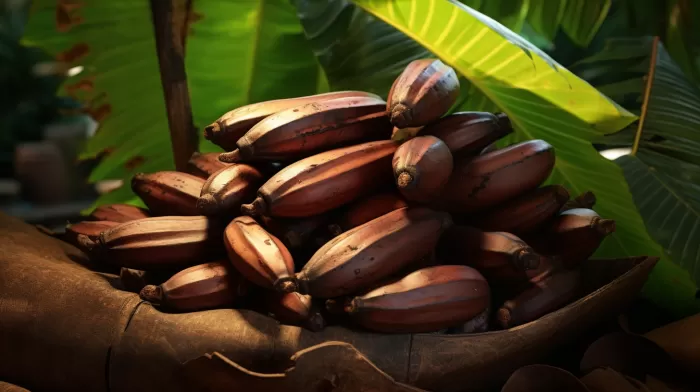Can you imagine a world without chocolate? The sweet treat has been captivating the taste buds of people from every continent for centuries. But is chocolate’s delicious taste just an illusion? Let’s dig a little deeper into the scrumptious world of chocolate to find out.
The history of chocolate love
Chocolate has been a beloved treat since the 17th century, when the sweet drink “chocolatl” was introduced to the Western world. Chocolatl inspired such passion that it was condemned as the “food of the devil.” In 1624, religious leader Johan Franciscus Rauch pleaded with monks not to drink it at all. However, no one paid any attention to his pleading. In fact, it became even more popular as royals sent it to each other as gifts. The Aztec emperor Montezuma reportedly downed 50 goblets of chocolate drink before visiting his harem.
The complex taste of chocolate
Researchers have analyzed the mouth-watering taste and smell of cocoa and found that its supposedly well-known flavor is a complex combination of other tastes and flavors. It’s a mixture of meat, peaches, fat, cabbage, earth, and honey… none of which individually smell or taste like chocolate.
According to Peter Schieberle, Ph.D., “When you put chocolate in your mouth, a chemical reaction happens. Some people just bite and swallow chocolate. If you do that, the reaction doesn’t have time to happen, and you lose a lot of flavor.”
The art of processing cocoa
Cocoa beans have a very bitter taste and need to be processed to bring out their characteristic flavor. In countries like Bali, cocoa beans are fermented naturally under banana leaves. Then they are cold-pressed to separate the oil and preserve the flavor-containing and antioxidant-rich catechins that make high-cacao chocolate so healthy.
Craving the sensory experience
Daniele Piomelli from the University of California has conducted extensive research into the pharmacology of chocolate. He believes there is a sensory component involved in cravings, explaining that “the smell and taste of a substance can contribute to making it desirable, just as can the settings in which it is consumed.”
Peter Schieberle adds that “to make a very good cocoa aroma, you need only 25 of the nearly 600 volatile compounds present in the beans.” Compiling a profile of the key chemical players responsible for giving specific foods their distinctive taste and aroma is known as “sensomics.”
So, while you might think you’re enjoying the true, unadulterated taste of chocolate, it turns out that the flavor components are actually far more complex than one might imagine. In reality, it’s a complex blend of various tastes and scents that work together to create the famous chocolate flavor we all love.
Choosing the best chocolate
If you want your chocolate to taste like “chocolate” and give you that pleasurable feeling, make sure it has plenty of raw cocoa content and is processed as naturally as possible. That way, you can get as many of the beneficial compounds and as many of the original flavor components as possible. Look for high-quality dark chocolate with a high percentage of cocoa content (preferably 70% or more); these options usually contain lower amounts of sugar and retain more antioxidants.
Additionally, consider buying chocolate from artisan chocolate makers who pay attention to each step of the chocolate-making process—from ethically-sourced beans to careful roasting and conching. This not only results in a higher-quality product but also supports sustainability and fair labor conditions in cocoa-producing countries.
Savoring the taste of chocolate
Finally, to truly enjoy the complex taste of chocolate, remember to take your time when eating it. Let the chocolate melt in your mouth, savoring the flavors as they unfold. This will enable the chemical reactions that happen in your mouth to play out fully, giving you the richest and most pleasurable chocolate experience possible. And after all, isn’t that what enjoying chocolate is all about?



